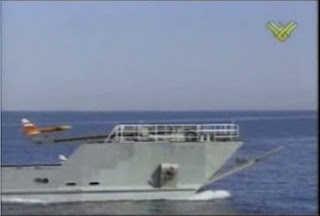Future Drone Power - Part III: Fill'r Up
Bluefin-9 AUV (Bluefin Robotics) As a follow-up to our posts on powering drones in the future, Bluefin Robotics recently announced a unique concept: deep sea stations that recharge autonomous underwater vehicles. The system is designed to wirelessly charge a Bluefin 9 AUV's 1.5 kWh lithium-polymer Subsea Battery using inductive coils. In addition to recharging the vehicle, the system has the added bonus of downloading data from the vehicle and transmitting it back to a home base. The glut of data collected by modern 2 and 3D imaging sonars will require this sort of flexibility on long endurance AUV missions. The future naval implications of this technology are expansive, however the actual implementation might be challenging. The system would work well in a permanent installation with AUVs on patrol keeping keep a navy port clear of mines or swimmers. In an expeditionary environment for say...
